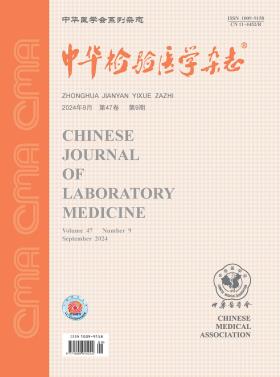解脲科氏葡萄球菌溶血、耐药性及同源性的研究
Q4 Health Professions
引用次数: 0
摘要
目的了解解脲科氏葡萄球菌的溶血、耐药及同源性特点。方法对临床分离的13株解脲科氏葡萄球菌进行回顾性分析。用MALDI-TOF ms对其进行鉴定,观察其在琼脂血平板上的菌落和溶血特性。证实了解脲金黄色葡萄球菌与柯氏葡萄球菌的共溶血作用。采用PCR检测溶血素基因和耐药基因。采用脉冲场凝胶电泳和质谱分析菌株的同源性。采用琼脂稀释法检测菌株对抗菌药物的敏感性。结果13株解脲金黄色葡萄球菌均表现出不同程度的溶血,与金黄色葡萄球菌的协同溶血作用增强。所有菌株对万古霉素和替加环素均敏感。携带mecA基因的菌株12株,携带cfr基因的菌株7株,携带ermC基因的菌株7株。采用MALDI-TOF质谱法将13株菌株分为3组,采用脉冲场凝胶电泳法将13株菌株分为6型。结论解脲金黄色葡萄球菌临床菌株表现出不同程度的溶血,金黄色葡萄球菌可增强溶血。它们虽然携带不同的耐药基因,但都对万古霉素和替加环素敏感。关键词:葡萄球菌;耐药,细菌;序列同源性本文章由计算机程序翻译,如有差异,请以英文原文为准。
Investigation on hemolysis, resistance and homology of Staphylococcus cohnii urealyticum
Objective
To investigate the characteristics of hemolysis, resistance and homology of Staphylococcus cohnii urealyticum.
Methods
A retrospective study was carried out on thirteen clinical strains of Staphylococcus cohnii urealyticum. They were re-identified by MALDI-TOF MS. Their colony and hemolytic characteristics on blood agar plates were observed. The co-hemolysis between Staphylococcus cohnii urealyticum and Staphylococcus aureus was demonstrated. The hemolysin genes and drug resistance genes were detected by PCR. Pulsed field gel electrophoresis and mass spectrometry were used to analyze the homology of strains. The susceptibility of strains to antimicrobial agents was detected by agar dilution.
Results
The confirmed 13 strains of Staphylococcus cohnii urealyticum showed various levels of hemolysis and had enhanced synergistic hemolysis with Staphylococcus aureus. All strains were susceptible to vancomycin and tigecycline. There were 12 strains which carried mecA gene, 7 strains carried cfr gene, 7 strains carried ermC gene. The 13 strains were divided into 3 groups by MALDI-TOF MS, and 6 types by pulsed field gel electrophoresis.
Conclusions
Clinical strains of Staphylococcus cohnii urealyticum demonstrated various levels of hemolysis which could be enhanced by Staphylococcus aureus. Although they carried different drug resistance genes, they were all susceptible to vancomycin and tigecycline.
Key words:
Staphylococcus; Drug resistance, bacterial; Sequence homology
求助全文
通过发布文献求助,成功后即可免费获取论文全文。
去求助
来源期刊

中华检验医学杂志
Health Professions-Medical Laboratory Technology
CiteScore
0.40
自引率
0.00%
发文量
8037
期刊介绍:
 求助内容:
求助内容: 应助结果提醒方式:
应助结果提醒方式:


